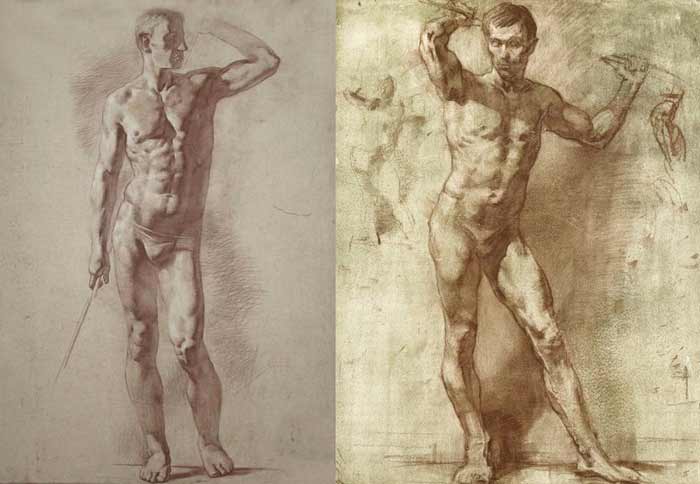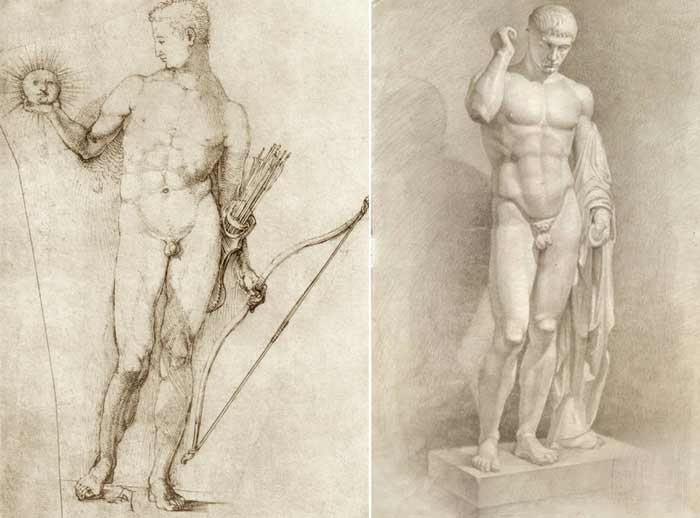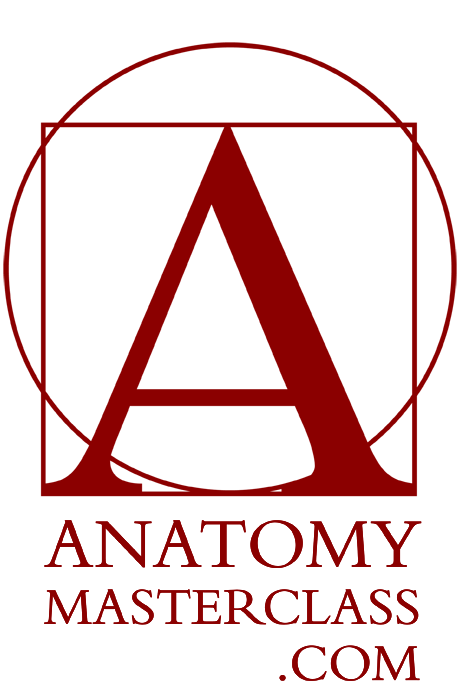Anatomy of the Human Body
Anatomy of the Human Body
Anatomy Lesson 14 – Part 1
In this video lesson, you will discover the anatomy of the human body.
Anatomy of the Human Body for Figurative Artists
A marble figure that was carved by French sculptor Guillame Coustou in the second half of the 18th century will be the model for this lesson. This figure of a body is done in the best academical traditions and is a good example of classical body proportions.
The figure stands in the contrapposto position. The word contrapposto, in Italian, means counterpoise. In this pose, the body weight is supported by one leg while another leg is bent at the knee. Such a position tilts the pelvis which, in turn, curves the spinal column.
Anatomy of the Human Body – Skeletal Structure and Proportions
In the anatomy of the human body, the main proportions of a standing figure are as follows.
The distance from the pit of the neck to the pubic bone is equal to the distance from the frontal top edge of the pelvis to the top border of the knee cap. This distance is also the same from the top of the knee cap to the toes.
The length of the hand is an important measuring unit for the human body. Remember, the length of the hand, from the wrist line to the tip of the middle finger, is equal to the height of the face from the bottom edge of the chin to the hairline.
The length of the hand is also equal to the length of the breastbone. It is also equal to the length of the collarbone.
Also, keep in mind that the length of the foot is equal to the height of the head.




The first pair of ribs has an almost circular shape. In perspective, it resembles an oval. The diameter of this oval will define the width of the neck at its base.
The bottom edge of the ribcage is located not far from the pelvis.
The ribcage itself resembles an egg with its pointy end facing upward.
In front of the ribcage, there is the breastbone.
At the top, I mark the axis of the shoulders with a horizontal line.
The chest nipples of a male figure are located underneath the mid-points of the collarbones.
The hip joints are located on the same level as the pubic bone.
The neck of the thigh bone is positioned diagonally downward from the head of this bone.
The axis of the supporting leg is not vertical, but tilted. It points to the footprint which almost coincides with the projection of the body’s center of gravity to the ground.
The axis of the upper leg bone is tilted even more.
The limb that does not support body weight is bent at the knee.
To construct proper proportions of the boy’s head, we need two dimensions – the length of the neck muscle (from the pit of the neck to the point where it inserts into the base of the skull) and the height of the ear. These dimensions are very easy to see and measure on the model.
Two curved lines, that go from the top and the bottom edges of the ear and toward the nose area, define the distance between the eyebrows and the base of the nose.
This dimension is also equal to the distance from the eyebrows to the hair roots and from the base of the nose to the bottom of the chin. This is very simple yet effective rule helps us establish correct proportions of a human head.
The top outline of the shoulders, which coincides with the trapezium muscle, is best to be drawn in one continuous curve to ensure the shoulders are on the same natural level.
The elbow area of the arm is on the same level as the bottom edge of the ribcage.
Anatomy of the Human Body – Muscles
Two muscles of the upper arm, the biceps brachii in front and the triceps brachii at the back of the arm, define the upper arm shape.
The lower arm is in the pronation position which means the radius bone crosses the elbow bone.
The width of the knee is defined by the dimension of the bony projections at the bottom of the thigbone and the bony projections at the top of the shinbone.
The upper leg has an inward tilt. This direction changes at the knee.
The tailor’s muscle, which originates from the upper front edge of the pelvis, spirals down to the inner top edge of the shinbone. It gives a characteristic curved contour to the upper leg.
The quadriceps muscle group defines the frontal shape of the upper leg.
The adductor group of muscles gives volume to the inner upper portion of the thigh.
The rear upper-half of the lower leg takes its characteristic outline from the calf muscles.
The inner ankle bone, which is the lower end of the shinbone, is located higher than the outer ankle bone which is the bottom edge of the calf bone.
Developed athletic figures often have an abdominal arch, called the Greek arch, that is formed by muscles. This arch is wider than the anatomical arch, which is the inner outline of the ribcage.
The six-pack muscle goes from the pubic bone upward and inserts into the ribcage and the lower part of the breastbone.
This muscle is horizonatally divided by three fibrous lines and is vertically split in the middle by a white line which form six-packs (this is where the name of this muscle comes from)…
[ The full lesson is avaibale to Anatomy Master Class members ]
To learn more about the anatomy of the human body, enroll in the Anatomy Master Class
Simple Pricing, No Surprises
One-time payment - Only $97 USD
ENROLL NOW



